
https://ebookmass.com/product/managing-engineering-
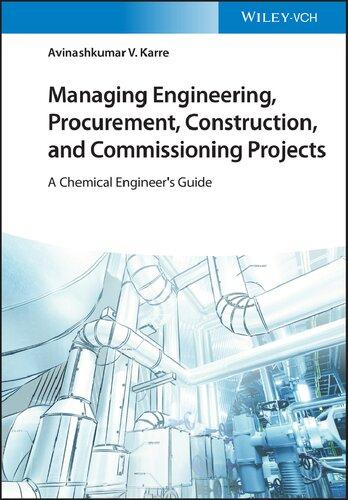
Instant digital products (PDF, ePub, MOBI) ready for you
Download now and discover formats that fit your needs...
Project Management, Planning and Control: Managing Engineering, Construction and Manufacturing Projects, 8th Edition Albert Lester
https://ebookmass.com/product/project-management-planning-and-controlmanaging-engineering-construction-and-manufacturing-projects-8thedition-albert-lester/ ebookmass.com
Designing Intelligent Construction Projects Michael Frahm
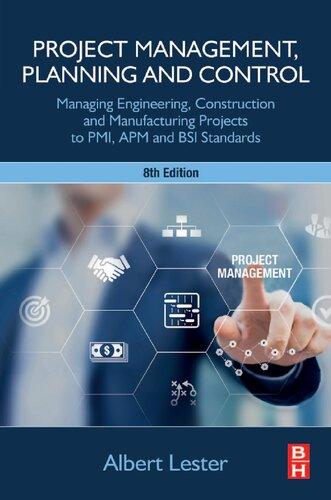
https://ebookmass.com/product/designing-intelligent-constructionprojects-michael-frahm/
ebookmass.com
Managing IT Projects: How to Pragmatically Deliver Projects for External Customers Marcin D■browski
https://ebookmass.com/product/managing-it-projects-how-topragmatically-deliver-projects-for-external-customers-marcindabrowski/ ebookmass.com
The Ecosystem Economy: How to Lead in the New Age of Sectors Without Borders Venkat Atluri
https://ebookmass.com/product/the-ecosystem-economy-how-to-lead-inthe-new-age-of-sectors-without-borders-venkat-atluri/
ebookmass.com
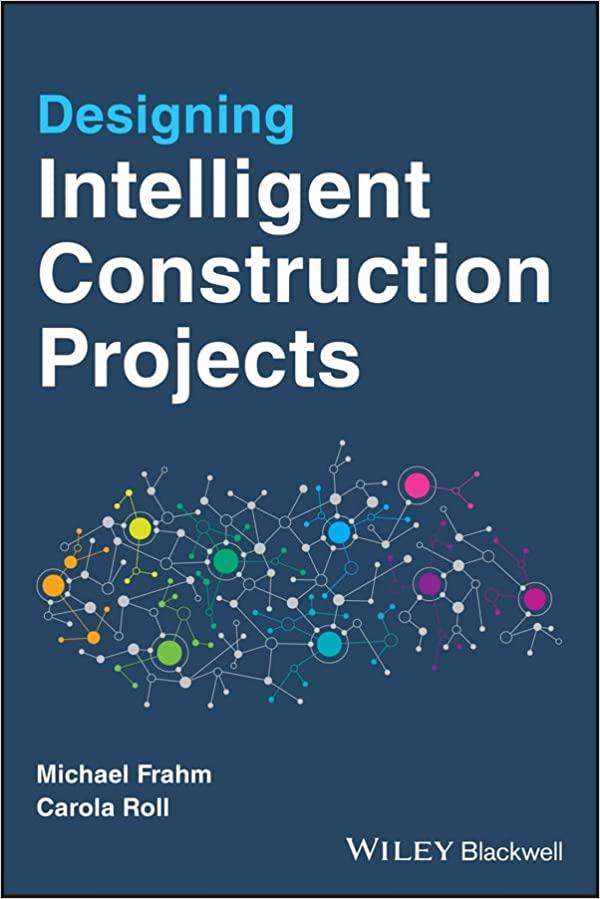
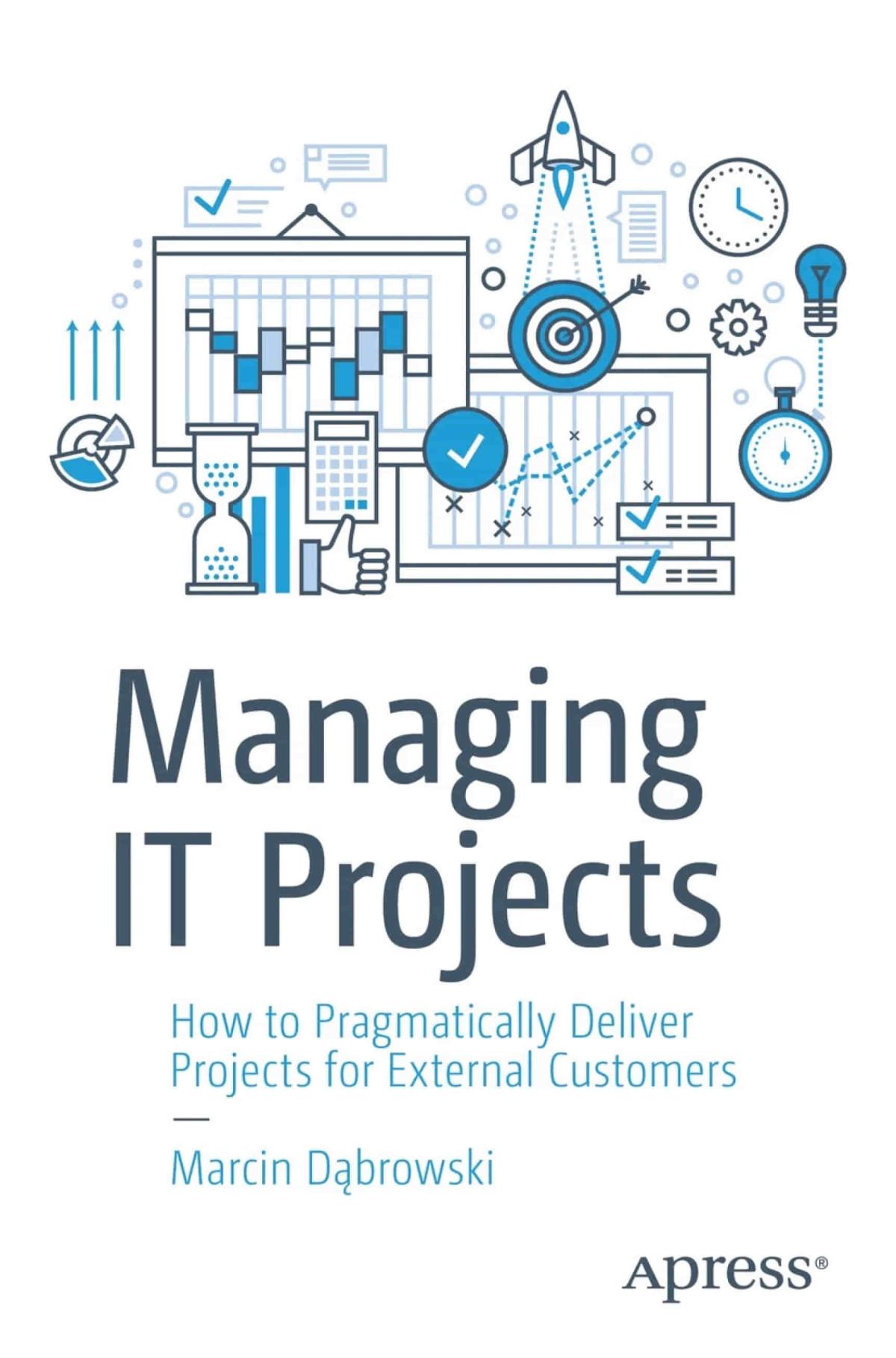

The
Explainability of Experience: Realism and Subjectivity
in Spinoza’s Theory of the Human Mind Ursula Renz
https://ebookmass.com/product/the-explainability-of-experiencerealism-and-subjectivity-in-spinozas-theory-of-the-human-mind-ursularenz/
ebookmass.com
Reimagining Science Education in the Anthropocene Maria F. G. Wallace
https://ebookmass.com/product/reimagining-science-education-in-theanthropocene-maria-f-g-wallace/
ebookmass.com
Organofluorine Chemistry - Synthesis and Applications 1st Edition Reddy V. Prakash
https://ebookmass.com/product/organofluorine-chemistry-synthesis-andapplications-1st-edition-reddy-v-prakash/
ebookmass.com
What You Need : An Opposites Attract, Hurt/Comfort Gay Romance Avril Ashton
https://ebookmass.com/product/what-you-need-an-opposites-attract-hurtcomfort-gay-romance-avril-ashton/
ebookmass.com
Auditing: Principles and Practices 1st Edition Ashish Kumar Sana
https://ebookmass.com/product/auditing-principles-and-practices-1stedition-ashish-kumar-sana/


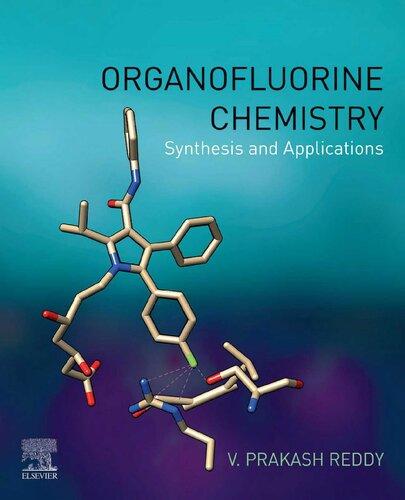


ebookmass.com
https://ebookmass.com/product/rivalry-vegas-aces-the-coachbook-1-lisa-suzanne/
ebookmass.com


ManagingEngineering,Procurement,Construction, andCommissioningProjects
ManagingEngineering,Procurement, Construction,andCommissioningProjects
AChemicalEngineer’sGuide
AvinashkumarV.Karre
Author
AvinashkumarV.Karre WorleyGroupInc. 4949EsssenLane 70809BatonRougeLA UnitedStates
CoverImage: ©nostal6ie/Shutterstock
Contentsinthisbookaresolelybasedon theauthor’sextensiveworkexperience andknowledge.Ifpartofthebookor somecontentsmatchwiththeexternal source,itwouldbeconsideredmerelya coincidence.
Allbookspublishedby WILEY-VCH arecarefully produced.Nevertheless,authors,editors,and publisherdonotwarranttheinformation containedinthesebooks,includingthisbook, tobefreeoferrors.Readersareadvisedtokeep inmindthatstatements,data,illustrations, proceduraldetailsorotheritemsmay inadvertentlybeinaccurate.
LibraryofCongressCardNo.: appliedfor BritishLibraryCataloguing-in-PublicationData Acataloguerecordforthisbookisavailable fromtheBritishLibrary.
Bibliographicinformationpublishedby theDeutscheNationalbibliothek TheDeutscheNationalbibliotheklists thispublicationintheDeutsche Nationalbibliografie;detailedbibliographic dataareavailableontheInternetat <http://dnb.d-nb.de>
©2023WILEY-VCHGmbH,Boschstr.12, 69469Weinheim,Germany
Allrightsreserved(includingthoseof translationintootherlanguages).Nopartof thisbookmaybereproducedinanyform–by photoprinting,microfilm,oranyother means–nortransmittedortranslatedintoa machinelanguagewithoutwrittenpermission fromthepublishers.Registerednames, trademarks,etc.usedinthisbook,evenwhen notspecificallymarkedassuch,arenottobe consideredunprotectedbylaw.
PrintISBN: 978-3-527-34836-7
ePDFISBN: 978-3-527-82974-3
ePubISBN: 978-3-527-82973-6
oBookISBN: 978-3-527-82972-9
Typesetting Straive,Chennai,India
Preface xi
PartIIntroductiontoEPCCIndustry
1Introduction 3
1.1WhatIsEPCCIndustry 3
1.2TypesofProjects 4
1.2.1CostofaProject 5
1.2.2PurposeofaProject 7
1.2.3EngineeringNeeds 8
1.2.4LicensorsNeed 8
1.2.5ProfitBased 8
1.2.6ScheduleBased 9
1.3FunctionofDifferentDisciplines 9
1.4DifferentPhasesoftheProject 11
1.5ImportanceofChemicalProcessEngineers 14
1.6InteractionwithOperatingIndustryorCustomers 15
1.7InteractionwithVendors 15
1.8WorksharewithMultipleOffices 17
1.8.1ImportanceofWorkshare 17
1.8.1.1Low-CostServices 17
1.8.1.2LaborShortages 18
1.8.1.3LeveltheWorkload 18
1.8.1.4TimeDifferencesinCountries 18
1.8.2TypesofWorkshares 19
1.8.2.1WorksharewithanIndividual 19
1.8.2.2WorkshareaPieceofaProject 19
1.8.2.3WorksharePartoftheEngineeringTeam 19
PartIIRolesofChemicalEngineersinDifferentPhasesof theProject 21
2Phase1(ScopePlanning) 23
2.1PerformFeasibilityStudies 23
2.1.1StudyTypes 23
2.1.2StudyDuration 24
2.2InteractionwithCustomer,Recommendations,andMeetings 24
2.3PreparationofPreliminaryScopeReports 25
2.3.1AssumptionsRequired 25
2.3.2BasisofDesignDocument 26
2.3.2.1Contents 26
2.3.2.2ComparisonofStudyReportwiththeDesignBasisDocument 26
2.3.2.3BasisoftheEquipment 26
2.3.2.4ReportFormat 27
2.3.2.5StudyReportTracking 27
2.4TechnologySelection 28
2.4.1TechnologyOptions 28
2.4.2MeetingBetweenCustomerandEPCC 28
2.4.3InitiateaStudyContractwithTechnologyCompanies 28
2.4.4ReviewReportfromTechnologyCompanies 29
2.4.5CustomerandEPCCMakeaTechnologySelection 30
2.4.6TechnologySelectionBasedonOtherCriteria 30
3Phase2(ScopeDefinition) 31
3.1DevelopaBlock-FlowDiagram 31
3.1.1WhatIsaBlock-FlowDiagram(BFD) 31
3.1.2InformationNeededtoDevelopaBFD 31
3.1.3UtilityBlock-FlowDiagrams 31
3.1.4Examples 31
3.1.5UsesofBFDandUBFDs 31
3.2DevelopaProcess-FlowDiagram 32
3.2.1WhatIsProcess-FlowDiagram 32
3.2.2InformationNeededtoDevelopaPFD 33
3.2.3UtilityFlowDiagrams 35
3.2.4Example 35
3.2.5UsesofPFDandUFD 35
3.2.6DistinguishingNewScopefromExisting 35
3.2.7RevisionstothePFDsandUFDs 36
3.2.8TitleblockforthePFD 36
3.3PrepareIFEQualityP&IDs 36
3.3.1IFEQualityP&IDs 36
3.3.2UsesofIFEP&IDs 37
3.3.2.1GeneralUses 37
3.3.2.2EstimatingUsesforPhase2Estimate 37
3.3.2.3ReviewswiththeCustomer 37
3.3.3ExampleofaP&ID 38
3.4IdentifyMajorPiecesofEquipment,Instruments,andElectrical 38
3.4.1IdentificationofMajorPiecesofEquipment 38
3.4.2ControlsandElectricalEstimate 39
3.4.3MechanicalEngineeringEstimate 39
3.5EstimatePreliminarySizingofMajorEquipmentandInstruments 40
3.5.1PreliminarySizingofMajorEquipment 40
3.5.2InstrumentSizing 41
3.5.3EstimationofElectricalLoadsBasedonPreliminaryHorsepower 41
3.6MetallurgySelectionofMajorEquipment 42
3.6.1ProvidePreliminaryInformationontheStream 42
3.6.2SpecialConsiderationfortheMetallurgy 43
3.6.3MostoftheServicesinRefineryAreCarbonSteel 43
3.6.4ImportanceofaMetallurgy 44
3.7CompleteSimulationsforDifferentCasesandPrepareIFEQuality HMB 45
3.8CompleteStudies 47
3.9PreliminaryEstimateofUtilitySummary 47
3.9.1IntroductiontoUtilitySummary 47
3.9.2UseofUtilitySummaryandValuePlusSuggestions 47
3.10ParticipationinLOPA 49
3.10.1WhatIsLOPA 49
3.10.2FormatofLOPA 49
3.10.3LOPATeam 49
3.10.4DifferenceBetweenLOPAandHAZOP 49
3.11PrepareIFEQualityDesignBasis 50
4Phase3(ScopeDevelopment) 51
4.1PerformDetailedHydraulics 51
4.1.1WhatIsDetailedHydraulics 51
4.1.2ExamplesofCriticalityofHydraulics 52
4.1.3ImportanceofDesignSafetyMargin 52
4.1.4BatteryLimitTableCoupledwithHydraulics 53
4.1.5LineSizingCriteriaforHydraulics 54
4.2DetailDesignofOtherEquipment 54
4.2.1HeatExchangers 54
4.2.2Vessels 56
4.2.3Columns 56
4.3InputtoLineListandtheProcess 57
4.4CreateChangeOrdersandReportAnyChangestoProject 63
4.5ProcessDataforInlineInstruments 64
4.5.1InputtoInlineInstrumentDatasheets 64
4.5.2HowProcessEngineersGettheData 64
4.5.3HowControlSystemUsetheData 65
4.5.4DataCheckingandWorkProcess 65
4.6PreparePreliminarySafetyValveEvaluations 66
4.7PrepareandIssueEquipmentDatasheets 68
4.8CommunicationwithOtherDisciplines,Projects,andtheCustomer 70
4.9ParticipateinHAZOP 70
4.10FollowUpandImplementationofHAZOPItems 71
4.11IssueandPrepareIFR/IFH/IFA/IFDQualityP&IDs/PFDs/MSDs (IncludingTie-in/DemoP&IDs) 72
4.12CompleteandLeadLine-by-LineReviewsofP&IDs 73
4.13PrepareIFDQualityDesignBasis 74
4.14IssueIFDHMBs 74
4.15UtilitySummaryIFD 75
4.16PrepareDPDTDiagrams 75
4.17PrepareMaterialSelectionDiagram 76
4.18DraftingoftheDrawingsandBackchecking 77
4.19Inputto30%ModelReviewsandPlotPlanDevelopment 79
4.20InputtoCostEstimate 80
4.21BudgetEstimate,Schedule,andStaffingPlan 80
4.21.1InteractiveSchedulePlanningMeetings 80
4.21.2BudgetPreparation 81
4.21.3ScheduleandDates 81
4.21.4StaffingPlan 81
4.21.5ProjectStatusProgressandTracking 86
4.22LeadWorkshareMeetings 87
4.23InputtoInternalMeetingswithProjectandDisciplineTeams 88
4.24PlantVisits 89
4.25InputtoPreparationofDemolitionandTie-inP&IDs 89
4.25.1Tie-inP&IDs 89
4.25.2DemoP&IDs 89
4.26PreparationofPipeServiceIndex 90
4.27ProcessAudit 91
5Phase4(DetailedDesign) 95
5.1ParticipateintheFinalHAZOP 95
5.2HAZOPActionItemCloseoutandHoldItems 95
5.3ProjectSupportasNeeded 96
5.4ProvideOfflineInstrumentData 96
5.5SquadCheckofProcessandVendorData 98
5.6FinalizeSafetyValvesDesignandIssueIFDDatasheets 99
5.7CloseoutofDocuments 101
5.8Inputto60%and90%ModelReviews 101
5.9LeadWorkshareMeeting 102
5.10IFCandIFC–RP&IDs 102
5.11LineListUpdatesandInputtoNewLines 103
5.12LeadingMOCMeetings 103
5.13Cause-and-EffectTable 105
5.14InputtoSPItemsandTie-inForms 106
5.14.1SPItems 106
5.14.2Tie-inForms 106
6Phase5(ConstructionandSupport) 109
6.1PreparationofProceduresandManuals 109
6.2Tie-inExecution 109
6.3ProvideAnswerstotheConstructionTeam 109
6.4UpdatingP&IDsasNeeded 111
7Phase6(CommissioningandStartup) 113
7.1PerformGeneralProcessActivities 113
7.2PrepareandCompletePre-startupandSafetyChecklists 114
7.3CheckPerformanceTestofAlltheEquipment 116
7.4ParticipateinControlSystemLoopTesting 116
7.5LeakTesting 117
7.6Drying-OutandOxygenFreeing 118
7.7StartupAssistance 118
PartIIITheProcessEngineer 119
8RolebyProcessEngineer’sPosition 121
8.1Entry-LevelProcessEngineer–0YearsExperience 121
8.2JuniorProcessEngineer–1–2YearsExperience 121
8.3Mid-LevelProcessEngineer–3–6YearsExperience 121
8.4LeadProcessEngineers–7–10YearsExperience 122
8.5SeniorProcessEngineers–10–15YearsExperience 122
8.6ProcessManagers–15+ YearsExperience 122
8.7CompetencyGuideforProcessEngineers 122
9InteractionofProcessEngineerswithOthers 137
9.1ProjectTree 137
9.2Customer 138
9.3MechanicalEngineer 139
9.4Projects 140
9.5PipingDesign 140
9.6PipingEngineering 141
9.7ControlSystemEngineer 141
9.8ElectricalEngineer 142
9.9CivilEngineer 142
9.10ConstructionTeam 143
9.11CostEstimating 143
9.12ProjectControls 144
x Contents
9.13Licensor 144
9.14OtherEPCCEngineer 145
9.15CADandDraftingCoordinator 145
9.16DocumentControl 146
Questions 147 Answers 149 Acronyms 153
Appendix 155
AppendixAProjectConceptualDiagram 157
A.1ExplanationofFigureA.1 157
A.2ExplanationofFigureA.2 158
A.3ExplanationofFigureA.3 158
A.4ExplanationofFigureA.4 159
A.5ExplanationofFigureA.5 160
A.6ExplanationofFigureA.6 161
A.7ExplanationofFigureA.7 162
AppendixBProjectScheduleDiagrams 163
B.1ExplanationofFigureB.1 163
AppendixCProject3DModelandPlotDiagrams 165
C.1ExplanationofFigureC.1 165
C.2ExplanationofFigureC.2 166
C.3ExplanationofFigureC.3 167
C.4ExplanationofFigureC.4 167
C.5ExplanationofFigureC.5 168
AppendixDProcessEngineeringDiagrams 171
D.1ExplanationofFigureD.1 171
D.2ExplanationofFigureD.2 171
D.3ExplanationofFigureD.3 171
References 175 Index 177
Preface
Thisbookiswrittenkeepinginmindexpansionorgrassrootprojectsinindustries, suchasoilandgas,refinery,chemicalplant,andwatertreatmentunits.Butthe principlesofprocessengineeringcanbeappliedtoanyproject,e.g.construction ofaroadorminingofmetals.Theobjectiveofthisbookistoexplainresponsibilitiesofachemicalprocessengineerwithoutgettingintomanydetailsofchemical engineeringequipmentdesignortechnicalequations.
Thereadercanbenefitinthefollowingways:
1.IfanengineerisnewtoEngineering,Procurement,Construction,andCommissioning(EPCC)industry,he/shecancontributetotheprojectwithoutneeding muchsupervision.Thisimprovesprojectefficiencyandgreaterunderstanding amongengineersanddisciplines.
2.Otherdisciplines,suchascivilengineeringandmechanicalengineering,can betterunderstandthefunctionsperformedbyachemicalprocessengineer.They cancoordinateinabetterwayforthesuccessoftheproject.Asuccessfulproject isonethatcanbefinishedunderbudgetoronbudget,withnoincidents,and underspecifiedprojecttimelines.
3.ThisbookcanbeaguidelinefornewcollegegraduateswhoarewillingorcurioustoenteranEPCCindustry.Thisshouldalsohelpnewgraduatestoprepare forinterviews.AsthereareseveralEPCCindustriesworldwide,thebookcanbe helpfultomanyengineers.
4.Thebookshouldalsobenefitpersonnelfromanoperatingcompanywhoare involvedinaproject.ThecustomercanunderstandtheroutinepracticesofEPCC industryandtherolesofchemicalprocessengineers.Thishelpsimprovecoordinationandcommunications.
May2019 AvinashkumarV.Karre WorleyGroupInc,BatonRouge LA70809,UnitedStates
ManagingEngineering,Procurement,Construction,andCommissioningProjects:AChemicalEngineer’sGuide, FirstEdition.AvinashkumarV.Karre. ©2023WILEY-VCHGmbH.Published2023byWILEY-VCHGmbH.
1.1WhatIsEPCCIndustry
Engineering,procurement,construction,andcommissioning(EPCC)industryis verychallengingduetoatightscheduleandspecificbudgetdefinedbytheoperating companiesorbythecustomers.Theterminology“EPCC”isfurtherclassifiedinto fourpartsasmentionedbelow:
1.Engineering
2.Procurement
3.Construction
4.Commissioning
Typically,engineeringofaprocessingunitisdonebyaprocessengineering company,suchasWorleyGroup.Sometimes,theengineeringisdonebythe operatingcompaniesiftheprojectissmallandiftheyhavenecessaryexpertise. Engineersworkingwiththeengineeringcompanieshavethenecessaryskillsetsand technicalcapabilitiestoexecutesmall(e.g.US$10million)aswellaslargerprojects (e.g.greaterthanUS$500million).ItistheresponsibilityoftheEPCCindustryto makesuretheyhavebrilliantandcapableengineersworkingforthem.Thereare severalengineeringcompanieslocatedallovertheworld.Someoftheengineering companiescouldhavespecificexpertiseinaparticulararea,e.g.offshorefield,and somemayhaveexpertiseandcapabilitiesindoingprojectsinallthesectors.Tohave asuccessfulproject,itiscriticaltohaveknowledgeableandexperiencedprocess engineerswhocandesignaplant.Apartfromtheprocessengineers,differentdisciplinesinvolvedarepipingengineers,mechanicalengineers,pipingdesigners,civil engineers,electricalengineers,control-systemengineers,andprojectmanagement. Oncetheengineeringiscompleted,primarycomponentsofanengineering processingplant,suchasequipment,instrument,andpiping,arepurchasedby theprocurementorthebuyerteam.Thedifferentdisciplineshaveaspecifictask ofputtingtogetherdifferentbidtabsforeachcomponentofthemanufacturing unit.Bidtabisacomparativedocumentofdifferentvendors’designsorabidfora component.Forexample,mechanicalengineerputstogetherapumpequipmentbid taboracomparativetableshowingdetails,suchasflow,pressure,head,andcostfor differentvendors.Thevendorselectionnextgoestotheprocurementdepartment ManagingEngineering,Procurement,Construction,andCommissioningProjects:AChemicalEngineer’sGuide, FirstEdition.AvinashkumarV.Karre.
©2023WILEY-VCHGmbH.Published2023byWILEY-VCHGmbH.
whereprocurementdetails,suchastimeline,specification,andnondisclosure agreement(NDA),areaddedandthefinalpurchaseorderisissuedtotheselected vendor.Processengineersprovidecommentstothebidtabsandtheirroleiscritical intheselectionofthefinalvendor.Thecustomerortheoperatingcompanieshave asayinthefinalselectionofthevendor.Theprocurementteamistaskedtokeep trackofseveralitemsontheproject,andtheyuseindustrysoftware(e.g.system applicationandproducts[SAPs])fortrackingandcheckingstatus.Processengineersandallotherdisciplinesarekeptintheloopintheprocurementcycle,and oftenprocessengineershelpvendorswiththetechnicalquestionsandclarifications. Allthecommunicationsforapieceofequipmentintheprocurementcycleare savedandtypicallyhandedovertotheprojectcustomersattheendoftheprojectfor information.
Constructionteamstartstherequiredplanningatthebeginningofthedetailed designengineering.Constructionteamhasknowledgeandexpertiseintransportinglargepiecesofequipment,e.g.distillationtowers.Otherconstructionexpertise requiredareplanningandcreatingahold-upzoneuntilthestructureisbuilt,cranes andtheirsizesrequired,etc.Oncetheequipmentorpieceoftheequipmentorpiping isdeliveredtotheconstructionsite,theconstructionteammovesthatpiecetothe allocatedlocationtoavoidtrafficinthehold-uporlaydownarea.Constructionteam mayhavetogetthestructuresandroadsbuiltpriortotheinstallationofequipment, piping,instruments,etc.Duringapeakconstructionduration,theprojectconstructionteamisverybusyinstallingeverythingatthepreplannedlocation.Thereare engineeringchallengesinvolved,andprocessengineersareconsultedwithquestions.Forexample,designednozzlesizeonequipmentwas8-in.standard(STD) weight,butthefabricatedequipmentnozzlewas8-in.extrastrong(XS)weight.The processengineerinthiscaseperformsquickhydraulicstomakesurethechangeis acceptable.
Duringinstallationofalltheconstructioncomponents,suchasequipment,piping,andinstrument,ateamofengineersandoperatorsareinvolvedinthefinalstep ofcommissioning.Commissioningisbasicallymakingsuretheplantorprocessing unitisreadytotakeafreshfeed.Keythingsinthecommissioningsteparehydrotesting,testingflangeorpipes,checkinginternalsofequipment,checkingfunctionality ofallinstruments,andcheckingperformanceofallsafetygearsworks.Process engineersfromtheEPCCindustryareinvolvedinthecommissioningstepasthey knowtheoperationanddesignaspectsofequipment,andtheycouldbeavaluable resourceduringthisstep.Theprocessengineersaresometimesaskedtostayatthe plantsitetoprovideround-the-clocksupporttoeliminateanyengineeringhurdles.
1.2TypesofProjects
Oncethecustomerdeterminestodoaprojectorinstallationofaprocessingunit, thecustomerchoosesoneormultipleEPCCcompaniestocompletetheproject.If theprojectissmalltolargesize,theengineeringcontractisgiventoasingleEPCC companytokeepthecostlowandtogainfastpacetotheproject.Oncethecontract
5 isreceivedbytheEPCC,theprojectisclassifiedintoseveralcategoriesasmentioned below,andfurtherplanningandmanpowerloadingisestimatedbytheEPCC.MultipleEPCCcompaniescouldberequiredforgrassrootprojectswherethecapabilities andsizeofasingleEPCCmaynotbesufficient.Thisisdonetomeetthedesired projecttimelinewithintheplannedbudget.Thetypeofprojectisdeterminedby followingcategories:
1.Costofaproject
2.Purposeofaproject
3.Engineeringneeds
4.Licensor’sinvolvement
5.Profitbased
6.Schedulebased
1.2.1CostofaProject
Totalinstalledcost(TIC)determinesthesizeofaproject.TICincludesthecostof allthemachinerypartsoftheprocessingunit,engineeringandlabor,government taxes,manufacturingsteps,andtransportation.Notethateachoperatingcompany orEPCCcompanymayhaveitsowndefinitionofthetypeofprojectbasedonthe cost.Belowisacrudedefinitionofthetypeofprojectsbasedonthecostinvolved: EngineeringteaminTable1.1referstoateamofpipingengineers,mechanical engineers,pipingdesigners,civilengineers,electricalengineers,control-system engineers,andprojectmanagement.Smallcapital(alsoknownassmallcap)project needsoneprocessengineereitherpart-timeorfull-timedependingonthestageof theproject.MoredetailsonstagesoftheprojectareexplainedinPartBofthisbook. Processengineersaremostlyinvolvedintheinitialstagesoftheproject.Inthe EPPCindustry,itisalsopossiblethatacollectionofseveralsmall-caporultra-small projectsareengineeredbyoneortwoprocessengineers.Itisalsopossiblethata singleprocessengineerfromtheoperatingcompanyorthecustomersupervisesa small-capproject,totallyavoidingtheneedforanEPCCindustry.
MidsizedprojectisoftenexecutedbyanEPCCcompanyduetounit-levelcomplexityinvolvedandneeds3–6processengineersfull-time.Sinceitinvolvesinstallation ofanewunitorrevampingofanexistingunit,theleadprocessengineersupervises alltheprocessengineeringactivitiesandotherprocessengineerssupportthedesign. Theleadprocessengineerisrequiredtocommunicatewithallthedisciplinesand customersforasmoothtransferofengineeringinformation.
Large-sizedprojectisdonebyasingleEPCCcompanyduetomulti-unitlevelcomplexityinvolvedandneeds8–10processengineersfull-time.Sincemultipleunits orareasareinvolved,severalleadsareassignedtodifferentareas,andsomeprocessengineerssupporteacharea’sleadprocessengineers.Examplesofsuchareas includereaction,storage,tankfarm,separation,andutilities.Eacharealeadprocessengineerisrequiredtocommunicatewithallthedisciplines,customers,and interconnectingareastomakesuresmoothtransferofengineeringinformationis completed.Forexample,theutilityarealeadprocessengineerisrequiredtocommunicatewithalltheareasaseachareaneedssomeutilityinitsprocesses.Examplesof
Table1.1 Definitionoftypeofprojectbasedoncostinvolved.
ProjecttypesCostinvolved
Exampleofa project Engineering teamsize (No.ofengineers) No.of process engineers
UltrasmallLessthanUS$5millionInstallationof smallsectionof apipeline 1–50.5–1
SmallcapitalUS$5–US$50millionInstallationofa vesselanda pump 6–201–2
MidsizedUS$51–US$300millionInstallationofa newunitor multiplesmall orsimpleunits 21–803–6
LargeUS$301–US$600millionInstallationof multiple complexunits 81–2008–10
GrassrootUS$601millionandmoreInstallationof multipleand complexplants 201+ 11–25
MegaMorethanUS$2billionInstallationofa newrefinery 500+ 26–50
someoftheutilitiesarecoolingwaterandinstrumentair.Thetankfarmarealead processengineerisrequiredtocommunicatewiththemainprocessareateamwhere therawmaterialandproductsaredesigned.
Grassrootprojectsarelargerinsizeandmightnotbehandledbythecustomers orasingleEPCC.MultipleEPCCcompaniesareinvolved,andtheprojectis strategicallydividedintosections.Forexample,alargetankfarmareaishandled byanindependentEPCCwhohasexpertiseinthetankdesign,the2ndEPCCis handlingthemainreaction,purification,andseparationoftheprocessingplant,and the3rdEPCCindustrycouldbehandlingdesignofutilityservices(utilitiessuch ascoolingtowersandboilers).Aunitleadprocessengineersupervisesallthe engineeringactivitiesforaunitandtherearemultipleunitleadprocessengineers. Eachunitleadprocessengineerisrequiredtocommunicatewithallthedisciplines, customers,alltheEPCCsinvolved,andinterconnectingareastomakesuresmooth transferofengineeringinformation.
Megaprojectsaremuchlargerinsizecomparedtograssrootprojects.Theyare oftenrareandinvolveinstallationofabrandnewplant,e.g.arefinerycomplex.MultipleEPCCcompaniesareinvolved,similartograssrootprojects,themegaprojects arealsodividedstrategicallyintosections.Preplanning,communication,coordination,andconsistencyamongalltheEPCCsarekeyparametersforthesuccessful completionofmegaprojects.
1.2.2PurposeofaProject
Eachprojectisuniqueandcanbeinitiatedbythecustomerduetoarevamppotential,agrassrootopportunity,acapacityexpansionfeasibilityofaunit,ageorcorrosionofaprocessingplant,safetyupgrades,andenvironmentalemissionsfactors.
Revampingaprocessingplantmeansutilizingsomeorpartoftheexistingequipmentandadditionofsomenewequipment.Agoodexampleisrevampingpreheated trainsofcrudeandvacuumdistillationunitsinarefinerytoachievehighercrude temperaturesandhigherenergyintegrationefficiencies.Therecouldbeanopportunityforthecustomertoinstallanewgrassrootplanttosupportalready-existing plant.Newchemicalgrassrootplantwouldmakesensenexttoanalready-existing refinerycomplexastherawmaterialsneededforthechemicalplantcouldbereadily availablenexttotherefinery.
MostoftheplantsintheUnitedStatesare40–100yearsoldandtheyaredesigned basedoncertainthroughputoriginally.Overtheyears,theplantoperationhas pushedthelimitsoftheexistingplantdesign,andovertimetheyseeoperational problems,likechokinginthelines,fouling,coking,high-pressuredrops,and vibrationsofequipment/supports.Alltheseoperationalproblemssuggestthat theexistingunithasacapacitylimitation.Thecustomerscouldbeinterestedin removingsuchbottlenecksinthesystemthroughcapacityexpansionprojects. Simplyreplacingapieceofpipeorapumpinsuchprojectscaneliminateacapacity limitationintheprocessingunit,increasingthroughputfortheunit.
Allprocessingplantsagewithtimelikehumans.Thereliabilityoftheequipment inthoseunitsisatriskovertimedespiterigorouspreventativemaintenance programs.Someofthecriticalequipment,suchasrecycledgascompressorin hydrocrackerunitorthesteamjetejectorsinvacuumdistillationunit,havedirect impactonthefunctionalityoftheprocessingunit.Iftheyareoldandneedfrequent maintenance,itisgoodideatoreplacesuchcriticalequipmenttogainreliability. Also,someoftheprocessingplantsarepronetomorecorrosionthanothers,and oftenrequirefrequentmaintenanceduetocorrosiveprocessfluidorhydrogen sulfide(H2 S)gasesbeinghandled.Aftercertainhistoryofmaintenanceandage oftheplant,itisimportanttoperformacorrosionsurveyintheunitandhavethe affectedequipmentorpiecesreplaced.Anexampleissulfur-containingequipment inthesulfurrecoveryunit(SRU)oftherefinery.SincetheSRUisattailendofthe refinery,whereH2 Sgasistreatedandconvertedtorecoversulfur,itisofprime importancefortherefinerytokeeptheSRUrunningwithoutanyinterruptions.All theupstreamrefineryunitoperationsareaffectediftheSRU’soperationisaffected. Insuchcases,itisverycriticaltomakesureallthecriticalcomponentsoftheSRU arefunctioningtotheirbestperformance.
Someoftheoldplantsmaynothaveallthesafetyinstrumentstoworksafely accordingtothelatestindustrystandardsandcouldbeputtingplantpersonnelat riskifnotattendedtopromptly.Forexample,theoldplantsmaynothaveagood safetystandardaroundthefiredheaterburners.Installationofanewburnermanagementsystem(BMS)ontheoldheaterensuresallthesafetystandardsaremet.
Someoftheprojectsaredrivenprimarilybyemissionstandardsandregulatedby governmentagencies.Tomeetthehighestornewemissionstandards,theprocessing plantmayhavetoadapttoanewprocessoranewcatalyst.Someofthecustomers oroperatingcompaniesgoonestepfurtheranddesireprojectsthattakecareofsuch emissionstandardsfornext20–30years,aslongasthereisaneconomicsense.Such visionarythinkingalsoavoidsanyfuturechangestotheprocessingplant,saving millionsforthecustomers.
1.2.3EngineeringNeeds
Someprojectsareuniqueandaredependentheavilyonworkthatinvolvesa specificdiscipline.Process-basedprojectsprimarilyrequireprocessengineering andfeasibilitystudies.Thereisnoconstructionorprocurementneededforsuch projects.Someprojectsconsistofmechanicalequipment,suchasHoppersorBins, whereprocessengineeringsupportisnotneeded,andtheydependprimarilyon mechanicalengineersforequipmentpurchase.Someprojects,suchasinstallation ofanewconcretepadfortheexistingunit,needsupportfromcivilengineers. Installationofsafetyinstrumentationorcablesandpanelsrequiresinstrumentationorelectricalengineers,andprocessengineersmaynotbeneededhere. Reworkingorreplacingexistingpipingwithidenticalpipingneedssupportfrom pipingengineersandpipingdesigners,andinsuchinstances,processengineersare notrequired.
1.2.4LicensorsNeed
Someprocessesrequireaprocesslicensorpackagepreparedbyalicensorand supportfromanEPCCcompany.ThecollaborationbetweenanEPCCandlicensor isrequiredsothattheprocesspackageisdesignedsafeandsound.EPCCinthis collaborationcouldhelpwithdefiningthefeed,utilities,androutingofdifferent products.Licensor-basedprojectsareverycommonthesedaysandneitherEPCC northecustomermayhavetheprocesscapabilitiesinthatarea.Oncethelicensor finishestheirprocesspackage,theEPCCcompanytakesthepackageandfurther incorporatesthatintothemaindesignoftheproject,whichinvolvesworking directlywiththecustomer.
1.2.5ProfitBased
Sometimesengineeringteamintheoperatingcompanyhasfoundaprocessor modificationopportunitiestotheexistingunittomakeaquickprofit.Apayback periodcouldbelessthantwotothreeyearsinsuchscenarios.Forexample,there couldbeaninstancewhereoneofthecustomersfindsthattheveryoldandunused distillationcolumnscouldberepurposed,andbyinstallationofsomeadditional equipment,aquickprofitcouldbemade.Inthisinstance,thecustomershould
9 makesurethattheoldexistingdistillationcolumnsareinusableconditionand minimalcivilstructuralmodificationsareneededforthecolumnstokeepthe projectcostaslowaspossible.
Inotherscenarios,thecustomercouldbedoingsomelaboratoryexperiments,and figuresthatbyinstallationofasimplepurificationprocesstothealready-existing unitcoulddoubletheirprofitsintwoyears.
Profitsbasedonsmall-capprojectsareveryattractivetothecustomersasthey providehighprofitswithsmallerpossiblecapitalinvestment.Anothergoodexample wouldbereplacingexistinglow-efficiencynaturalgasburnersforafiredheaterwith anultralowNOxburner(ULN).Thereplacementofburnersensureshighefficiency isachievedintheburners,savingonoperatingcostoffuelgaswithminorcapital investment.
1.2.6ScheduleBased
Severalpiping,electrical,orinstrumentationtie-inscouldbepossiblewhen installingnewequipmentintheexistingfacility.Theturnaroundtimeoftheprocessingplantplaysavitalroleinsuchprojects.Atie-inisdefinedbyaconnection ofanewpieceofpipingorinstrumenttotheexistingone,e.g.tie-innew4′′ pipeto theexisting4′′ piping.Theprojectscheduleisplannedaroundtheshutdowntiming oftheprocessingplant.
Althoughthescheduleismonitoredforeveryproject,itmaynotbenecessarily criticalforalltheprojects.Someoftheprojectscouldbecompletedwithinoneor twoyearsinadvancebasedonprocurementstrategyoravailabilityofmaterialor costofitems.
Formostoftheprojects,projectscheduleisverycriticalforthesuccessfulcompletionofaproject,astheprofitsaredirectlyproportionaltotimelycompletionand startofaprocessingplant.Someoftheprojectsaredesignedtobecompletedbased ontheemissiontimelinesetbythegovernmentagencies.
1.3FunctionofDifferentDisciplines
Asmentionedearlier,severaldisciplinesareinvolveddependingonthesize,stage, andtypeofaproject.Thissectionbrieflytouchesonresponsibilitiesofeachdisciplineinrelationtotheprojectandcoordinationwithaprocessengineer.Following differentdisciplinesareinvolved:
1.Processengineer
2.Mechanicalengineer
3.Pipingengineer
4.Pipingdesigner
5.Control-systemengineer
6.Electricalengineer
7.Projectmanager
8.Procurementmanager
9.Projectcontrols
10.Projectadministrations
11.Documentcontrol
12.Estimating
ProcessEngineer:
Primaryresponsibilityofaprocessengineeristodesignequipment,developequipmentspecificationsheets,catalystdesignandselection,developpipingandinstrumentationdiagrams(P&IDs),developheatandmaterial-balancetables,perform hydraulicstudies,catalystresearch,catalystinventorycalculations,participatein HazardandOperabilityAnalysis(HAZOPs),participatein3Dmodelreviews,flare andreliefsystemdesign,provideprocessinputfortheinstrumentandlinelistdata, inputtothematerialselectionandplotplanarrangementdiagrams,andcoordinate withotherdisciplinesandcustomers.
Mechanicalengineer:
Primaryresponsibilityofamechanicalengineeristoprovidemechanicalequipment detailstotheprocessspecificationsheets,preparebidtabsorcomparedifferentvendorquotes,coordinatewithotherdisciplinesandvendors,participatein3Dmodel reviews,providemechanicalinputtotheP&IDs,prepareprocurementpackagesfor equipment,andfacilitatemeetingswithvendorsasneeded.
Pipingengineer:
Primaryresponsibilityofapipingengineeristoprovideengineeringdetails(suchas insulationandthickness)tothepipinglinelist,developspecialtypipingitems(such assteamtrap),developpipingspecificationdocuments,andcoordinatewithother disciplinesandcustomers.
Pipingdesigner:
Pipingdesignersdevelop3Dmodels,preparesquad-checkpackagesforpiping isometricdrawings,developisometricdrawings,providepipinginputtotheP&IDs, preparepipingtie-inpackages,andcoordinatewithotherdisciplinesandcustomers.
Control-systemengineer:
Control-systemengineersdevelopinstrumentationspecifications,performinstrumentsizingcalculations,provideinputtotheP&IDs,prepareinstrumentation installationdetails,preparepanellayoutdrawings,prepareprocurementpackages forinstruments,participatein3Dmodelsreviews,andcoordinatewithother disciplinesandcustomers.
Electricalengineer:
Electricalengineersperformelectricalloadcalculations,determinesubstation/ generatorsizeneeded,finalizeelectricallightingneededfortheprocessareas, preparewiringloopdiagrams,provideinputtotheP&IDs,participatein3Dmodels reviews,prepareprocurementpackagesforelectricalequipment,andcoordinate withotherdisciplinesandcustomers.
Projectmanager:
Projectmanagerscoordinatewithotherdisciplinesandcustomers,supervisecost andscheduleofaproject,facilitatemeetingsfortheprojectasrequired,solveprojectengineeringproblems,maintaindecision/risk/action,register,controlchange orders,andparticipatein3Dmodelsreviews.
Procurement:
Theyworkcloselywithotherdisciplinesandensurethatalltheitemsareprocured accordingtotheschedule.
Projectcontrol:
Theyprepareschedulesbasedoninputfromotherdisciplines,monitormanhourson theproject,monitorandadjustschedulewithchangesontheproject,trackchange orders,andprepareprogressreportsonaweeklybasis.
Projectadministration:
Theyprovideonboardingguidelinestothenewmemberscomingtotheteam, arrangemeetings,tracksafetytrainingforindividuals,trackandmaintainproject meetingcalendars,andcoordinatewithseveraldisciplinesandcustomers.
Documentcontrol:
Theyissueallthedocumentsprovidedtothembydifferentdisciplines,trackall vendordocumentsandtheirprogress,andcoordinatewithseveraldisciplinesand customers.
Estimating:
Theyperformcostevaluationoftheprojectineveryphaseoftheprojectandprovide feedbacktootherdisciplinesandcustomers.Theyareimportantdisciplinesasthe costresultsdeterminethefateoftheproject.
1.4DifferentPhasesoftheProject
Eachprojectissectionedintoseveralphasestoensurethatthemoneyspenton engineeringandtowardthefinalinstallationoftheprojectmakeseconomicsense. Eachphaseoftheprojectundergoesarigorouscostestimate.Iftheestimatedcost comesouthigherthanthetargetpricetheprojectiscanceled,orfurtheroptionsare exploredtooptimizeorreducecost.Abriefdescriptionofeachphaseisgivenbelow:
Phase1–Scopefeasibility:
Thecustomeroftheprojecttypicallyhasanideaintheirmindfromverybeginning. OncethecontractisgiventotheEPCCcompany,thecustomerandEPCCcompany togethermakeprogresswiththescopeplanning.ProcessengineersfromtheEPCC companymaybetaskedtoperformseveralfeasibilitystudiesandexploreoptions. Atthisstage,thereisahigh-leveltechnicalinteraction/meetingwiththeprocess engineerfromtheEPCCandcustomer.Processengineerpreparespreliminaryscope reportsandpresentsthemtothecustomersinseveralmeetings.Sometimesthere aredifferenttechnologiesavailable,andthecustomerandEPCCmustchooseone
technologythatmakeseconomicsense.Atthisstageoftheproject,mainlytheprocessengineerfromtheEPCCcompanyisactivelyinvolvedintheearlydesignand communicatesdirectlywiththecustomer.TheprojectmanagerfromEPCChasfew responsibilitiestodocumentthedecisionsandtracktheprogressofthephase.Estimatingteamisinvolvedtowardtheendofthephase.NodrawingsorP&IDsare developedatthisfeasibilitystage.
Phase2–Scopedefinition:
Oncethescopeoftheprojectisplanned,selected,andfeasibilityischecked,further definitionisdoneinthisphase.Developmentofaprocessorablock-flowdiagram, identificationofmajorpiecesofequipment,preliminarysizingofmajorequipment, andpreparingestimatedqualityP&IDs(sometimesoptional)aredoneinthis phase,andcostoftheprojectisestimated.Aprojectisdeadinthisphaseifthe costestimatesarehigherthanthetargetvalues.Thefinancialriskofcanceling theprojectatthisstageisverylow.Ifthecostestimatesarehigher,insuchcases, thecustomermaydecidetocanceltheprojectorexploreanoptiontocutapart oftheprocessingschemeandstartinthemiddleoftheprocess,whichmaymake theprojectviable.Forexample,ifthecostestimateforproducingproductCfrom rawmaterialAisveryhigh,thecustomermaychoosetostartfromrawmaterialB togettoC.Thisshouldwork,providedthereisanadequatesupplyandeconomics tostartwitharawmaterialB.Followingtwoequationsshowthatavoidingaraw materialAinthemodifiedoptionsavesprojectcost.
→ B → C …(Highprojectcost)
B → C …(Lowprojectcost)
Phase3–Scopedevelopment:
OncetheprojectisapprovedinPhase2andmovesforwardtoPhase3,furtherdevelopmentinthedesignisdoneinthisphase.Actualdesignandspecificationsforallthe equipment,instruments,civil-relateddesigns,andelectricaldesignsareprepared, butthereisnopurchaseorderplacedinthisstage,P&IDsaredevelopedtoshow allthepipinganddetails,linelistispreparedwithapreliminaryprocessdata,heat andmaterialbalanceisfinalized,30%accurate3Dmodelispreparedfortheproject, detailhydraulicsandpreliminarysafetyvalveevaluationaredone,preliminaryallocationofequipmentisdone,fieldvisitsarecarriedout,HAZOPmeetingsareheld towardtheendoftheproject,andfinallycostestimateiscompleted.Mostofthe projectsarelikelytomoveforwardtothenextphaseoftheprojectasthefinancial riskhasreducedtowardtheendofthephasethroughtheknowledgeofunknown piecesoftheproject.Butiftheprojectweretobecanceledatthisstage(perhapsdue togeopoliticalreasons),thefinanciallossesforthecustomersarelimitedtoonly laborcostsincurredfortheengineering,astheengineeringmaterialneededforthe projectisnotorderedatthisstage.
Phase4–Detaileddesign:
Allequipment,piping,control-systemitems,electricalitems,andcivilitemsarepurchasedfromvendors,andtheprogressoftheprocurementistrackedthroughout
